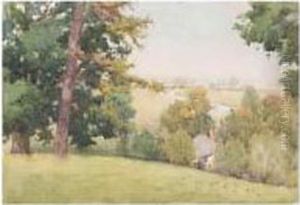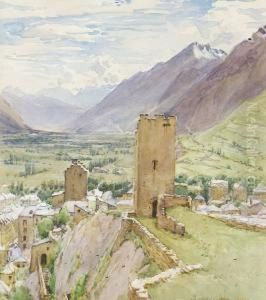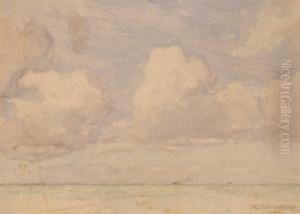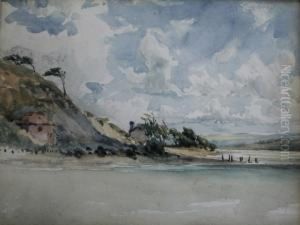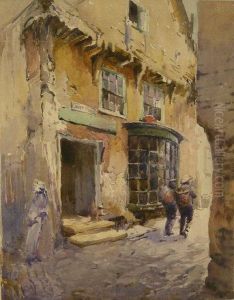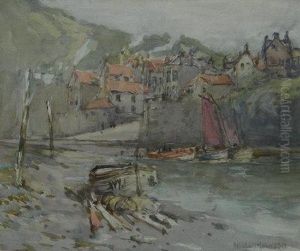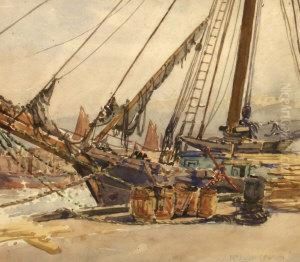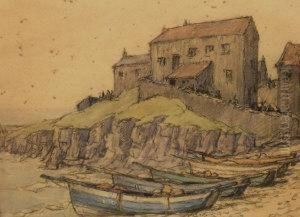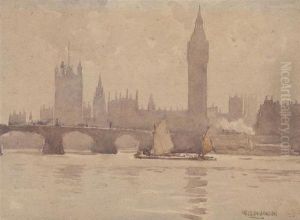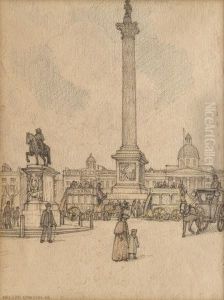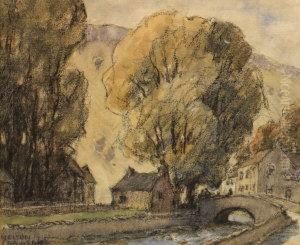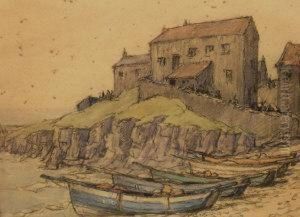Nelson Ethelred Dawson Paintings
Nelson Ethelred Dawson was an English artist known for his contributions to the Arts and Crafts Movement, which emerged in Britain in the late 19th century as a reaction against the industrialization of the art-making process. Born in Stamford, Lincolnshire, on the 4th of December 1859, Dawson initially pursued a career in marine engineering. However, his passion for art led him to abandon engineering in favor of painting and metalwork.
Dawson was largely self-taught as an artist, though he spent some time studying at the South Kensington Schools, now known as the Royal College of Art. He worked in a variety of media, including watercolor, etching, and silverwork. Along with his wife, Edith Dawson, who was also a talented artist, he produced beautiful pieces of jewelry and metalwork, often incorporating elements of nature into their designs.
Dawson's work was exhibited at the Royal Academy and with the Royal Society of Painter-Etchers, of which he was a member. His paintings often depicted marine subjects, reflecting his early career and love for the sea. In addition to his artistic pursuits, Dawson wrote articles and books on art and was actively involved in the Arts and Crafts Exhibition Society.
During the early 20th century, Dawson also began to experiment with enamelwork, which became one of his significant contributions to the Arts and Crafts Movement. He and his wife worked together on these pieces, combining traditional techniques with modern aesthetic sensibilities.
Nelson Ethelred Dawson's career spanned several decades, and his work was influential in promoting the values of craftsmanship and design within the context of the Arts and Crafts Movement. He continued to create art until his later years, passing away on the 21st of October, 1941, in Ludham, Norfolk. His legacy is preserved in the form of his diverse artistic works, which can be found in museums and private collections.
